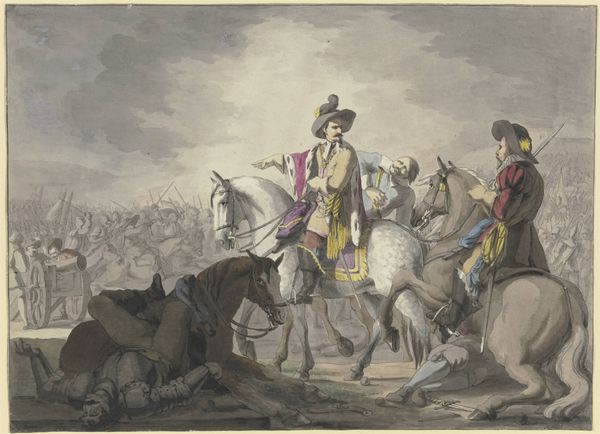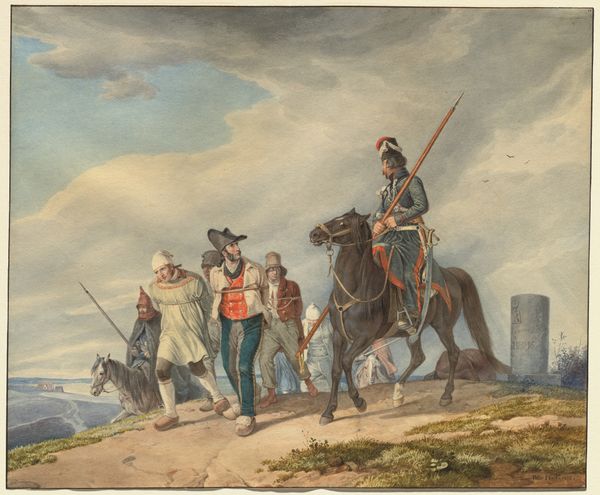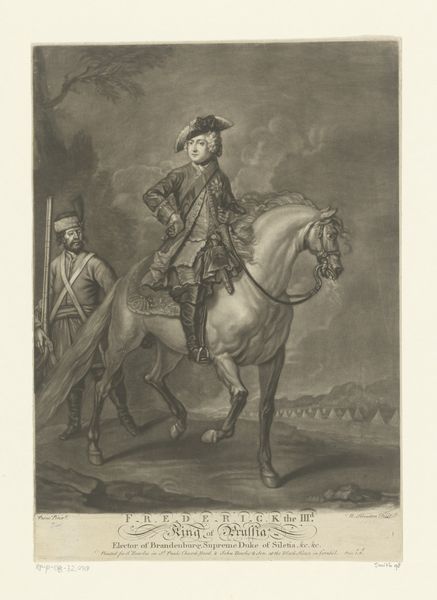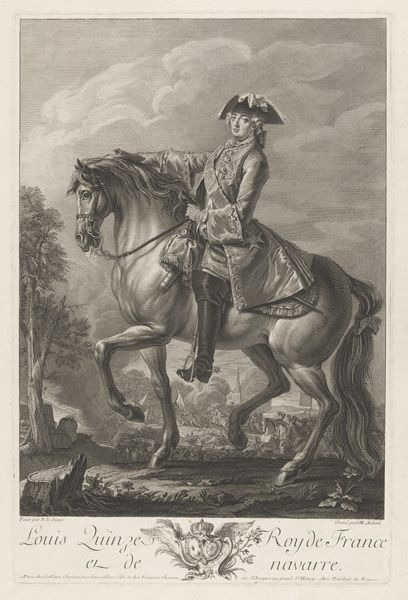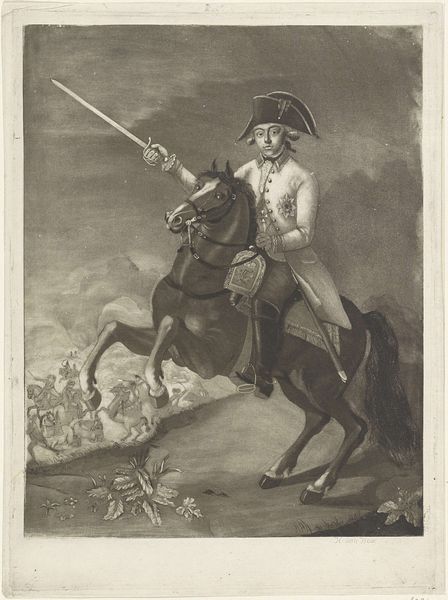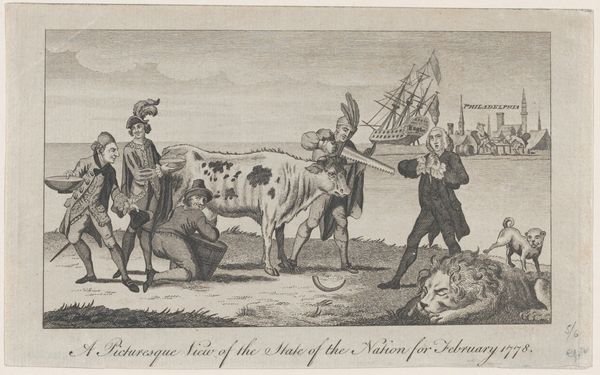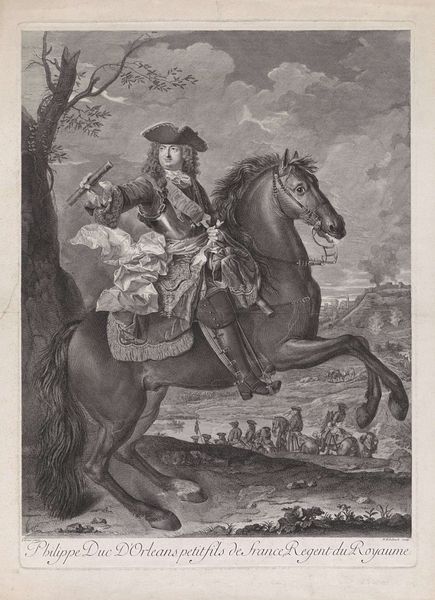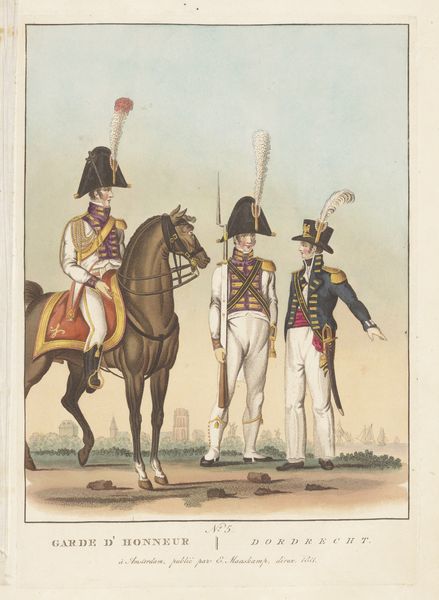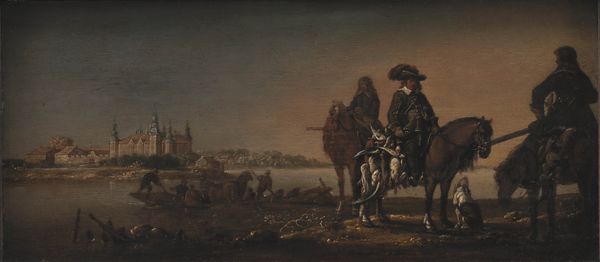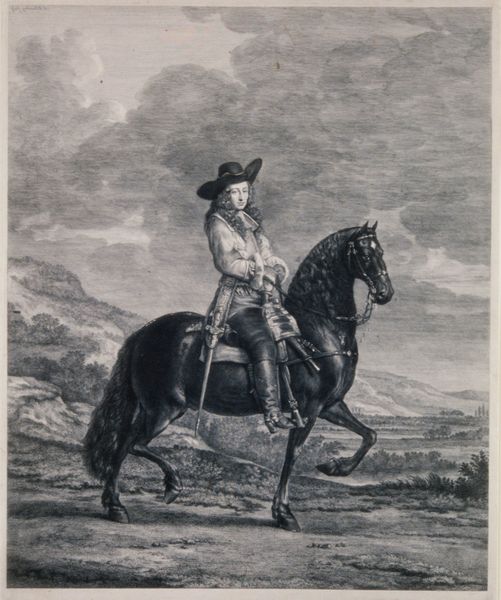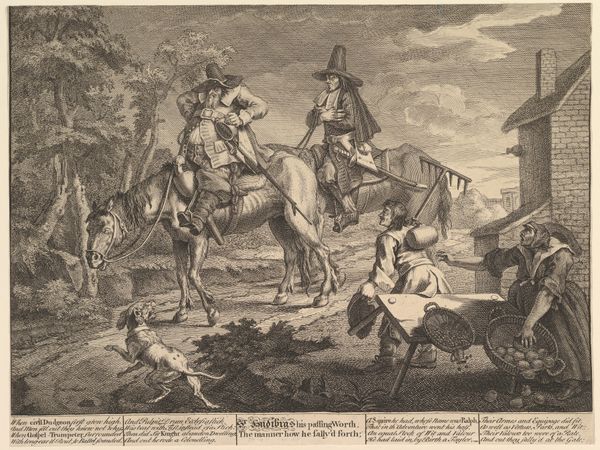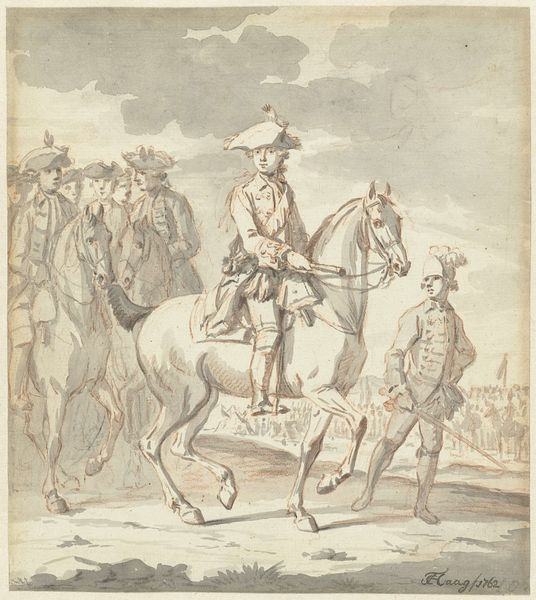
Am Ufer eines Flußes sitzt viel Volk bei den Schiffen, vorne rechts ein reich gekleideter Reiter mit einem Turban, links galopiert ein zweiter
0:00
0:00
drawing, coloured-pencil, watercolor, ink, chalk
#
drawing
#
coloured-pencil
#
landscape
#
watercolor
#
ink
#
coloured pencil
#
chalk
#
watercolour illustration
#
rococo
Copyright: Public Domain
This artwork by Jacob van Strij shows riders with a crowd watching near the ships on a riverbank. Notice the turban worn by the richly dressed rider on the right. This headwear, originating in the Middle East, signifies more than just cultural identity; it evokes notions of trade, exoticism, and even a touch of the Orient. Consider the Magi in Renaissance paintings, often depicted with similar head coverings, embodying wisdom from afar. This motif is not static. The turban, once a marker of Eastern dignity, has traversed continents and centuries. It has been adopted, adapted, and imbued with new meanings. In some contexts, it symbolizes resistance, while in others, it becomes a fashion statement, shedding its original cultural weight. The image of the turban becomes a powerful force, engaging viewers on a deep, subconscious level, evoking ideas of tradition, cultural exchange, and the ever-shifting nature of identity. It is a continuous cyclical progression that has resurfaced and evolved throughout history.
Comments
No comments
Be the first to comment and join the conversation on the ultimate creative platform.
